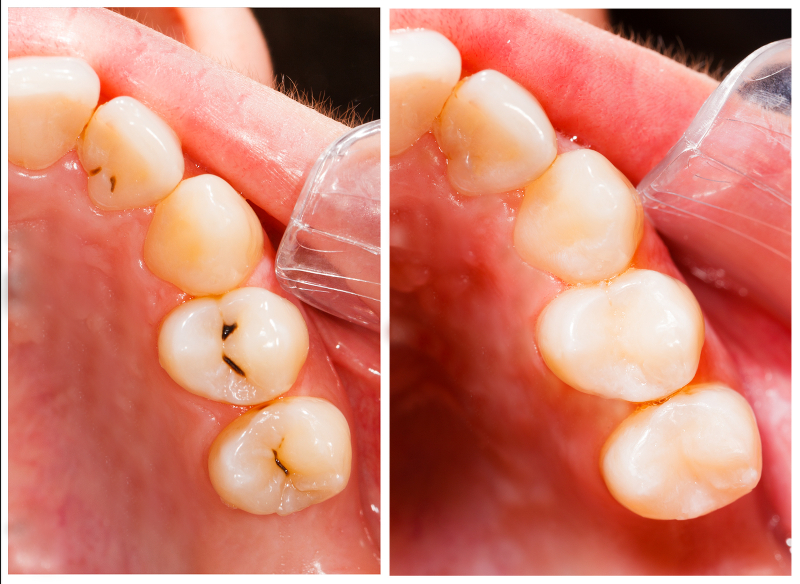Dental Sealants
 Dental sealants, also known as fissure sealants, are used as a preventive measure for teeth prone to dental caries. They aren’t indicated for all posterior teeth, known as molars, but just in those which are at a higher risk of dental decay and cavity formation in future.
Dental sealants, also known as fissure sealants, are used as a preventive measure for teeth prone to dental caries. They aren’t indicated for all posterior teeth, known as molars, but just in those which are at a higher risk of dental decay and cavity formation in future.
They seal the fissures or grooves that are present on the molar and premolar teeth in our mouth- the ones we use to grind and chew our food with. These fissures act as a nidus for food accumulation and resultant bacterial breakdown of the tooth surface, leading to infection and cavity formation.
Sealants are thin protective seals that are applied to the chewing surface of your back teeth. They are brushed on once your teeth have been cleaned and then cured with a special light to help harden the sealant. Dental sealants last anywhere from 3-5 years, but should be checked during regular checkups.
They fill the small grooves on the chewing surface of your back teeth to help prevent germs and small particles of food settling in these tiny grooves. The benefit of sealants allow for better breath and reduce the need for fillings. Drilling teeth in preparation for fillings can be costly, and being that fillings are prone to further decay; fillings weaken the tooth over a long period of time.
Sealants have no affect on brushing and chewing and in fact make the chewing surfaces of teeth smoother, allowing easier cleaning through brushing and little to no accumulation of food in the deep grooves of the teeth. Sealants are mostly advised for children over 6 years of age and young adults, to keep their molars safe from decay, although anyone at any age at a risk for cavity formation in a tooth can have it done. They are also indicated for patients with special needs, in whom maintaining oral hygiene can be particularly difficult, and in patients undergoing orthodontic treatment, those who suffer conditions leading to a dry mouth and in those whose teeth have the initial carious lesion developing, limited to the superficial enamel of the tooth.
The process is completely painless, involving simply cleaning the tooth, removing the most superficial caries if present, treating the tooth with an acid to create a micro-retentive surface for the plastic material which is then applied over the fissures.
Dental sealants do not eliminate the need for fluoride products, but should be used in conjunction with sealants to obtain a healthier mouth.





